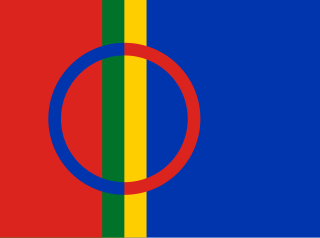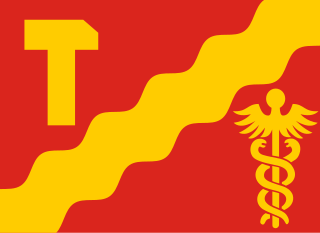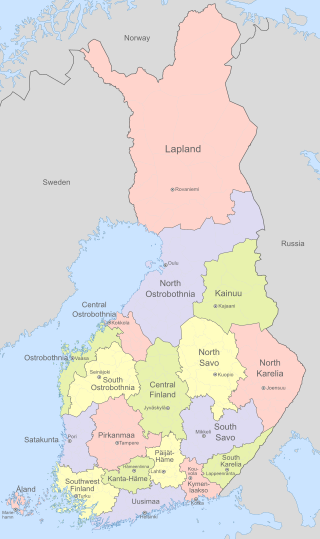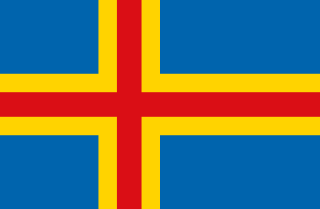
Finland, officially the Republic of Finland, is a Nordic country in Northern Europe. It borders Sweden to the northwest, Norway to the north, and Russia to the east, with the Gulf of Bothnia to the west and the Gulf of Finland to the south, opposite Estonia. Finland covers a total area of 338,145 square kilometres (130,559 sq mi), including a land area of 303,815 square kilometres (117,304 sq mi), and has a population of 5.6 million. Helsinki is the capital and largest city. The vast majority of the population are ethnic Finns. The official languages are Finnish and Swedish; 84.9 percent of the population speak the first as their mother tongue and 5.1 percent the latter. Finland's climate varies from humid continental in the south to boreal in the north. The land cover is predominantly boreal forest biome, with more than 180,000 recorded lakes.

Helsinki is the capital and most populous city in Finland. It is on the shore of the Gulf of Finland and is the seat of southern Finland's Uusimaa region. About 675,000 people live in the municipality, with 1.25 million in the capital region and 1.58 million in the metropolitan area. As the most populous urban area in Finland, it is the country's most significant centre for politics, education, finance, culture, and research. Helsinki is 80 kilometres (50 mi) north of Tallinn, Estonia, 360 kilometres (220 mi) north of Riga, Latvia, 400 kilometres (250 mi) east of Stockholm, Sweden, and 300 kilometres (190 mi) west of Saint Petersburg, Russia. Helsinki has significant historical connections with these four cities.

The javelin throw is a track and field event where the javelin, a spear about 2.5 m in length, is thrown as far as possible. The javelin thrower gains momentum by running within a predetermined area. Javelin throwing is an event of both the men's decathlon and the women's heptathlon.

The Sámi are the traditionally Sámi-speaking Indigenous peoples inhabiting the region of Sápmi, which today encompasses large northern parts of Norway, Sweden, Finland, and of the Kola Peninsula in Russia. The region of Sápmi was formerly known as Lapland, and the Sámi have historically been known in English as Lapps or Laplanders, but these terms are regarded as offensive by the Sámi, who prefer their own endonym, e.g. Northern Sámi Sápmi. Their traditional languages are the Sámi languages, which are classified as a branch of the Uralic language family.

Tampere is a city in Finland and the regional capital of Pirkanmaa. It is located in the Finnish Lakeland. The population of Tampere is approximately 255,000, while the metropolitan area has a population of approximately 417,000. It is the 3rd most populous municipality in Finland, and the second most populous urban area in the country after the Helsinki metropolitan area.

The northern region of Europe has several definitions. A restrictive definition may describe northern Europe as being roughly north of the southern coast of the Baltic Sea, which is about 54°N, or may be based on other geographical factors such as climate and ecology.
The former Oulu Province in Finland was divided on two regions, nine sub-regions and 43 municipalities.

Finland is divided into 19 regions which are governed by regional councils that serve as forums of cooperation for the municipalities of each region. The councils are composed of delegates from the municipal councils. The main tasks of regional councils are regional planning, the development of enterprises, and education. Between 2004 and 2012, the regional council of Kainuu was elected via popular elections as part of an experimental regional administration.

Kuopio is a city in Finland and the regional capital of North Savo. It is located in the Finnish Lakeland. The population of Kuopio is approximately 124,000, while the sub-region has a population of approximately 145,000. It is the 8th most populous municipality in Finland, and the seventh most populous urban area in the country.

Pylkönmäki is a former municipality of Finland. It was consolidated to Saarijärvi on 1 January 2009.

Rally Finland is a rally competition in the Finnish Lakeland in Central Finland. The rally is driven on wide and smooth gravel roads, featuring blind crests and big jumps. It is the fastest event in the World Rally Championship and has been dubbed the "Grand Prix of Rallying" and the "Grand Prix on Gravel". Rally Finland is among the largest annually organised public events in the Nordic countries, attracting hundreds of thousands of spectators each year. The rally has been known to be very difficult for non-Nordic drivers; only seven drivers from countries other than Finland or Sweden have won the event- in the 1980s and before, the field was made up almost entirely of Finnish and Swedish drivers.
The Official Finnish Charts are national record charts in Finland compiled and published by Musiikkituottajat – IFPI Finland. The name Suomen virallinen lista/Finlands officiella lista, which is singular in both Finnish and Swedish, is used generically to refer to both the albums and the singles chart, and the context reveals which chart is meant.
The Lapponia was an express passenger train operated by the Finnish State Railways, the predecessor of the current national rail traffic operator VR Group. The Lapponia trains operated on a direct route from Oulu via Seinäjoki and Tampere to Helsinki. Southbound Lapponia trains departed from Oulu at 7:00am, arriving in Helsinki at approximately 2:00pm. The returning northbound train left Helsinki at 4:00pm, arriving in Oulu at 10:45pm.

Pasi Ikonen was a Finnish orienteering competitor, winner of the middle distance at the 2001 World Orienteering Championships. His other achievements include two individual silver medals at the world championships, and medals at the World Games and the European championships.

Finnish is a Finnic language of the Uralic language family, spoken by the majority of the population in Finland and by ethnic Finns outside of Finland. Finnish is one of the two official languages of Finland, alongside Swedish. In Sweden, both Finnish and Meänkieli are official minority languages. Kven, which like Meänkieli is mutually intelligible with Finnish, is spoken in the Norwegian counties of Troms and Finnmark by a minority of Finnish descent.

Åland is an autonomous and demilitarised region of Finland. Receiving its autonomy by a 1920 decision of the League of Nations, it is the smallest region of Finland by both area (1,580 km2) and population (30,129), constituting 0.51% of Finland's land area and 0.54% of its population. Its only official language is Swedish and the capital city is Mariehamn.

Paavola is a former municipality of Finland, now a village in the municipality of Siikajoki. The village is located beside the Siikajoki river. Though lacking rail transport connections, the settlement does lie beside the crossroads of routes 86 and 807.

The Province of Oulu was a province of Finland from 1775 to 2009. It bordered the provinces of Lapland, Western Finland and Eastern Finland and also the Gulf of Bothnia and Russia.
Kivimaa mine was gold and copper mine active during the years 1969–1970 in Tervola at Sivakkajoki. During this time 18 587 tonnes of ore were extracted which contained 2.0 grams of gold per tonne. The concentration of copper in the ore was 1.20%. Outokumpu Ltd., which owned the mine, mined the quartz-carbonate veins with highest concentration of gold and copper. The ore from the mine was transported to the mine of Vihanti to be enriched. The mining ended on 12 December 1969. The buildings at the mine were taken down in the summer of 1974.

Iron ochre or iron ocher (Ancient Greek: ὠχρός, pale yellow, orange) — at least three iron ore minerals, common abrasives and pigments with a red-brown or brown-orange hue and the powdery consistency of ocher, were known under such a trivial name. The term “iron ocher” was primarily used among mineral collectors, geologists, miners and representatives of related craft professions. It may refer to:
















